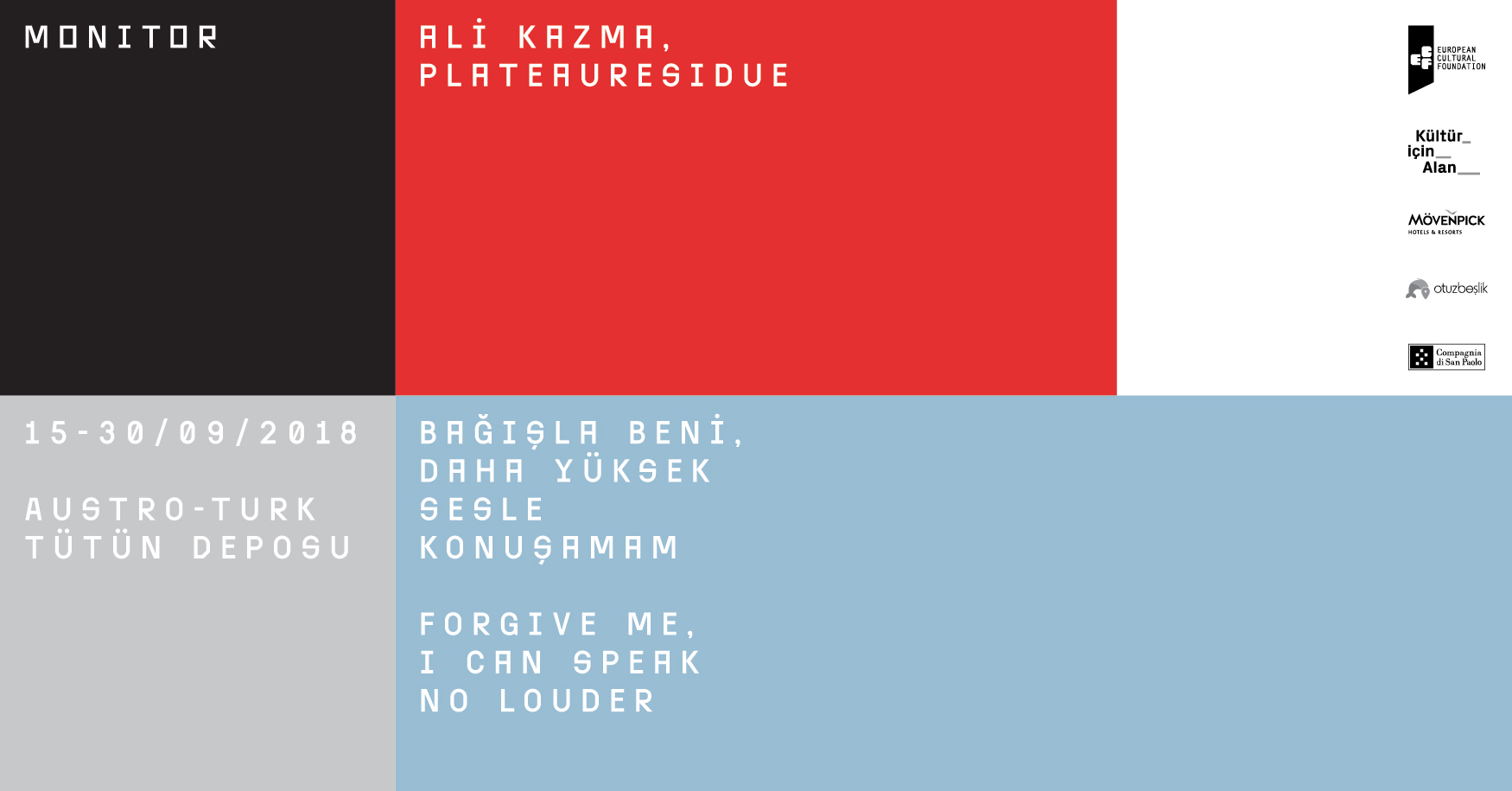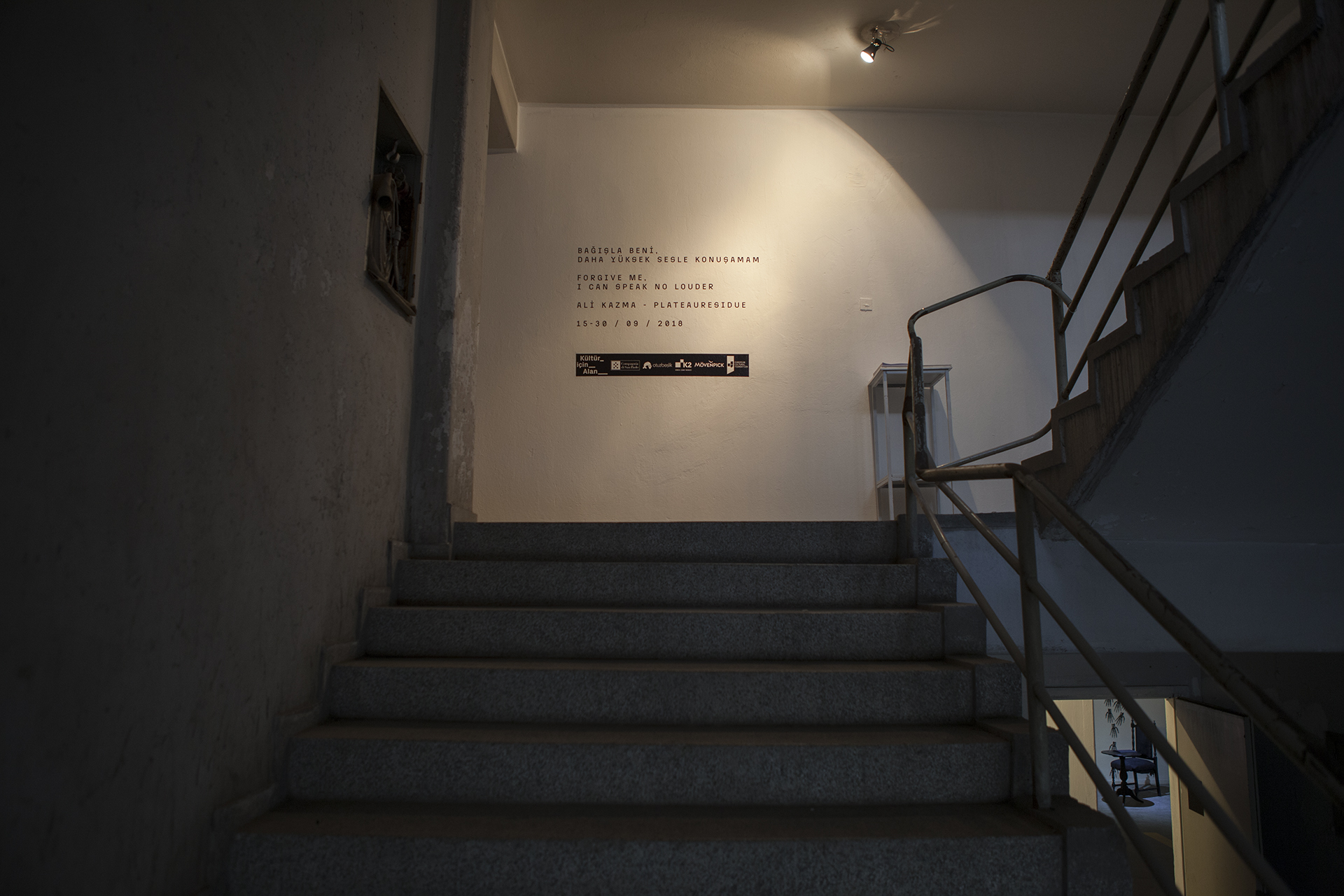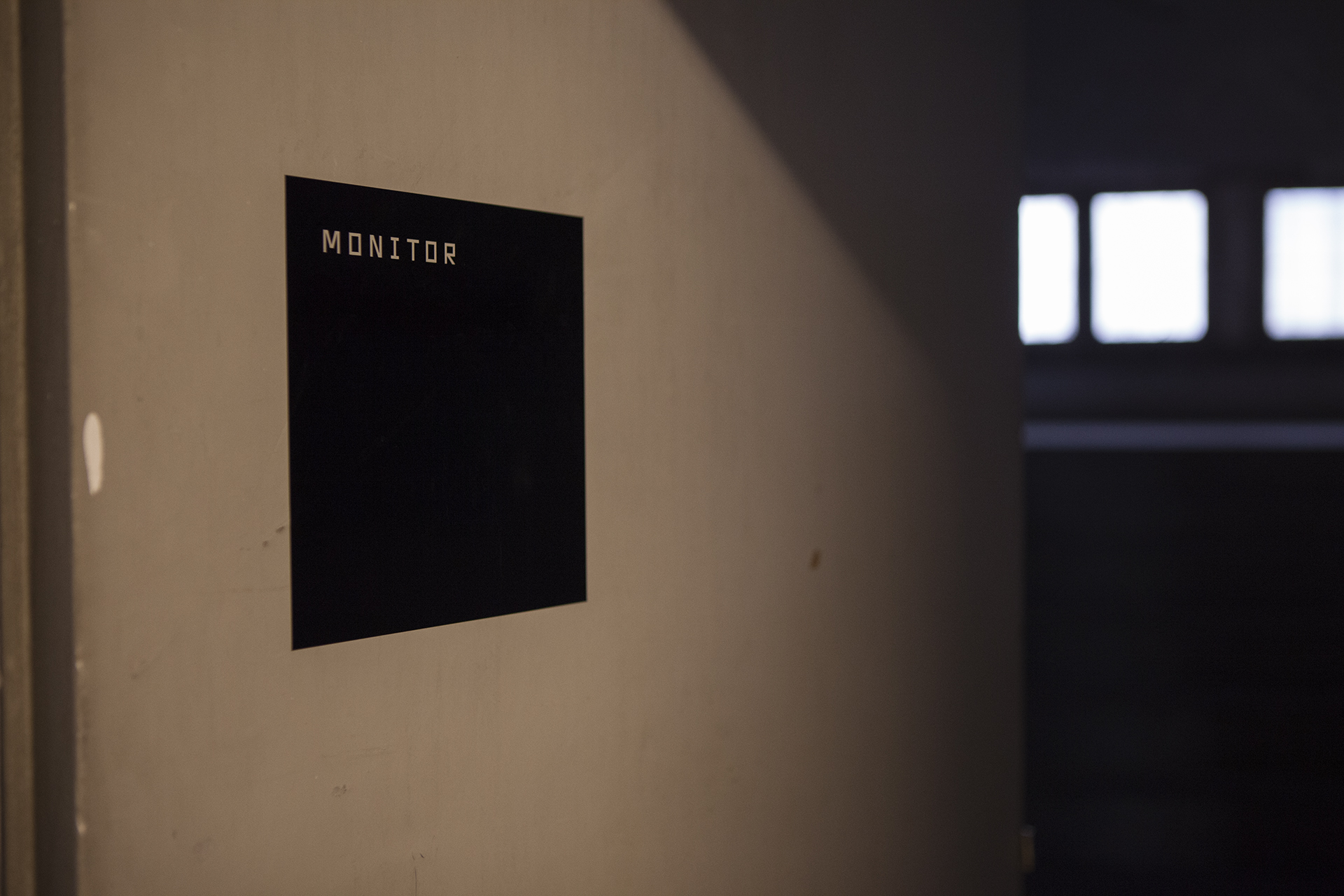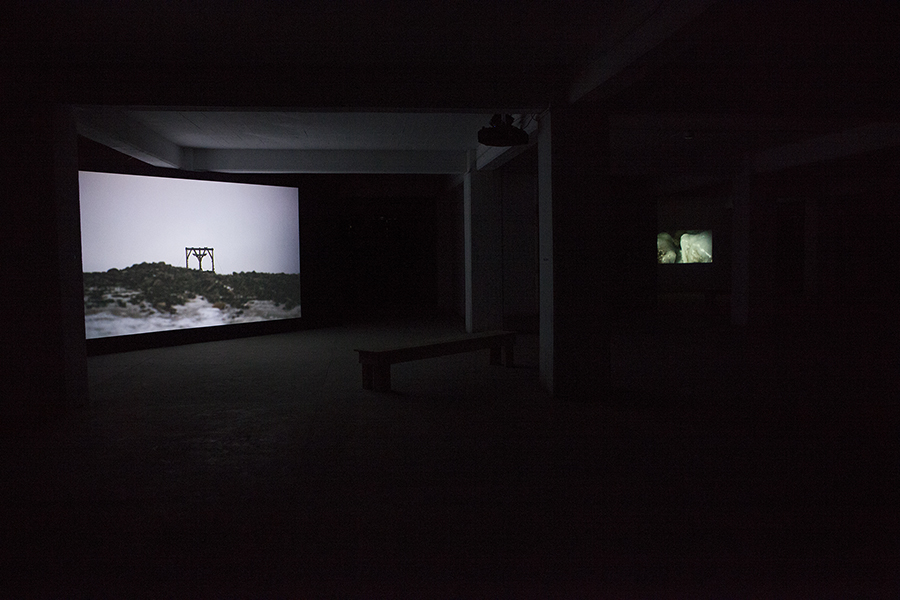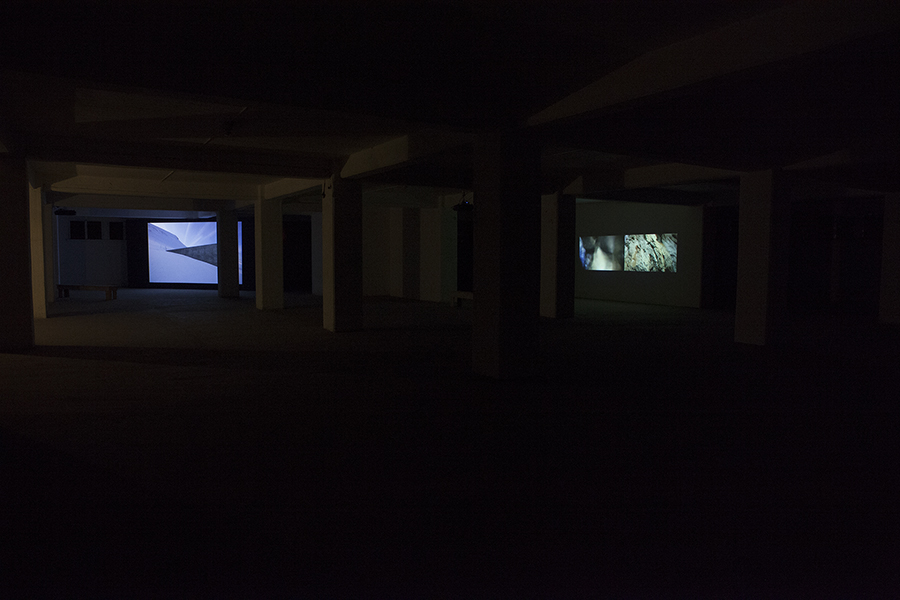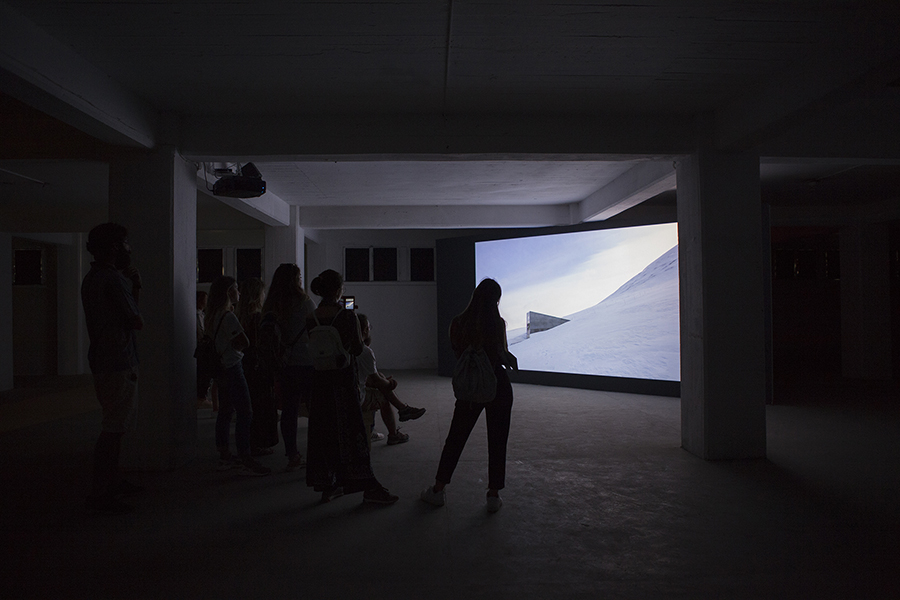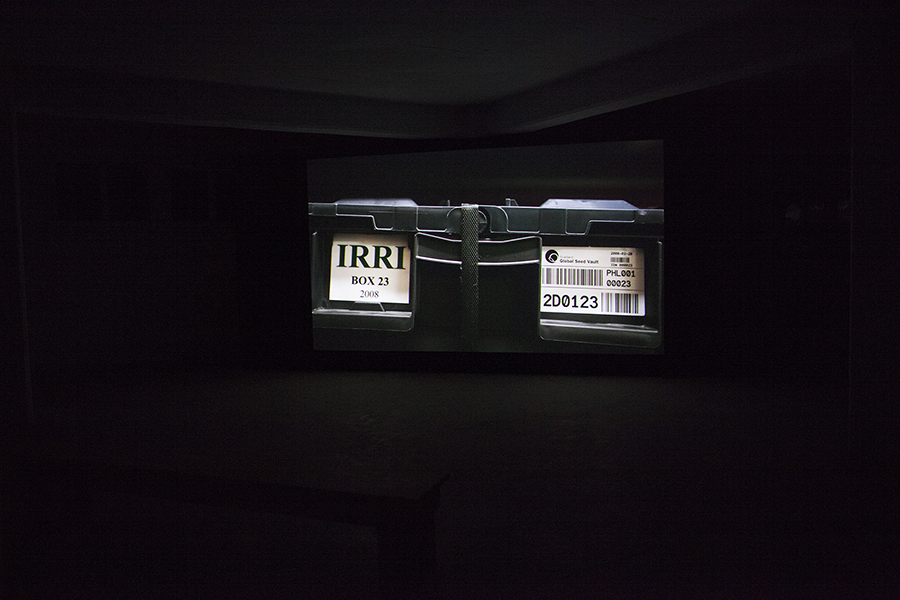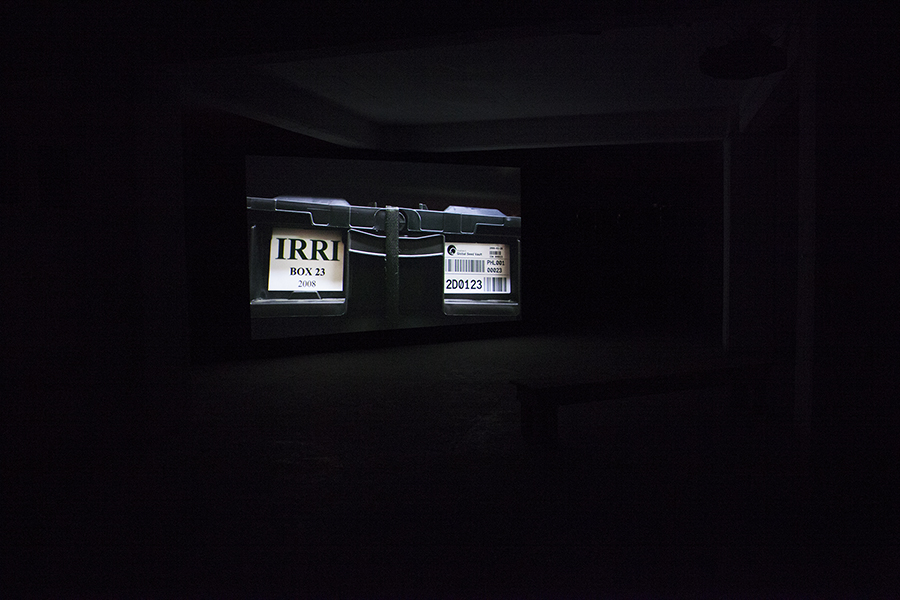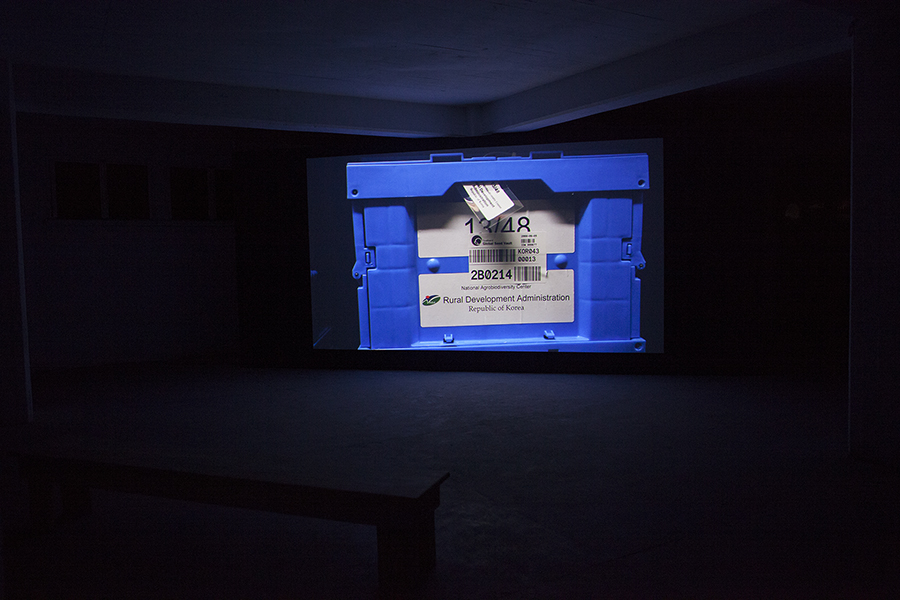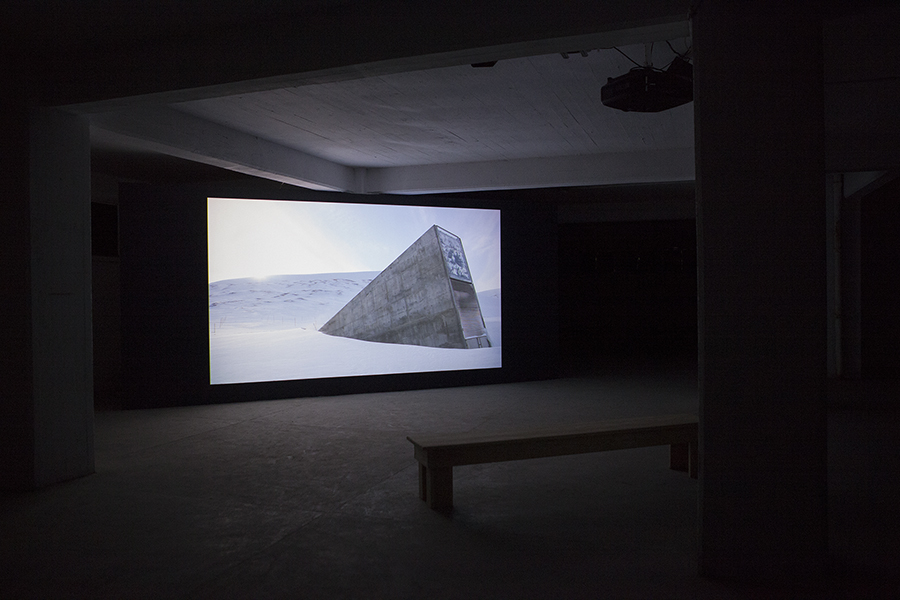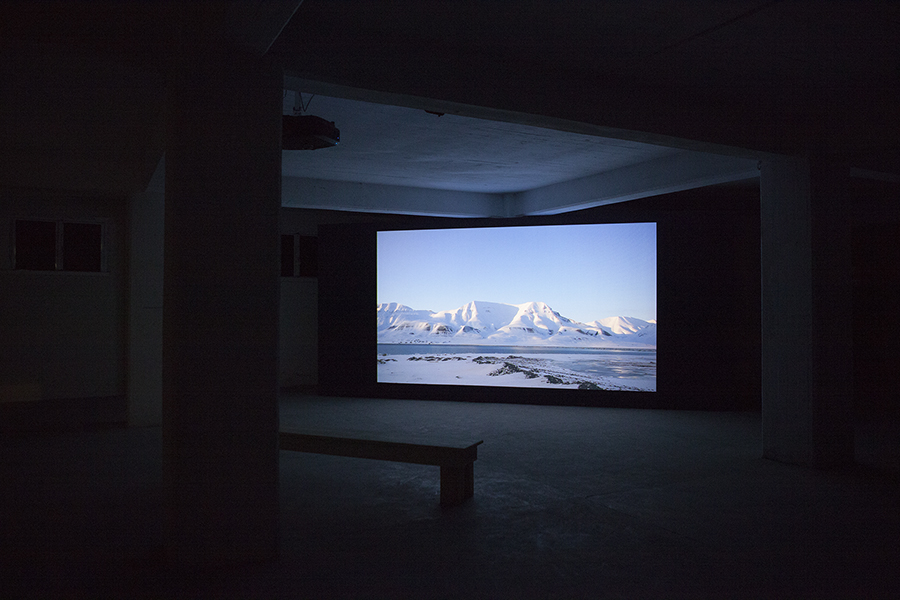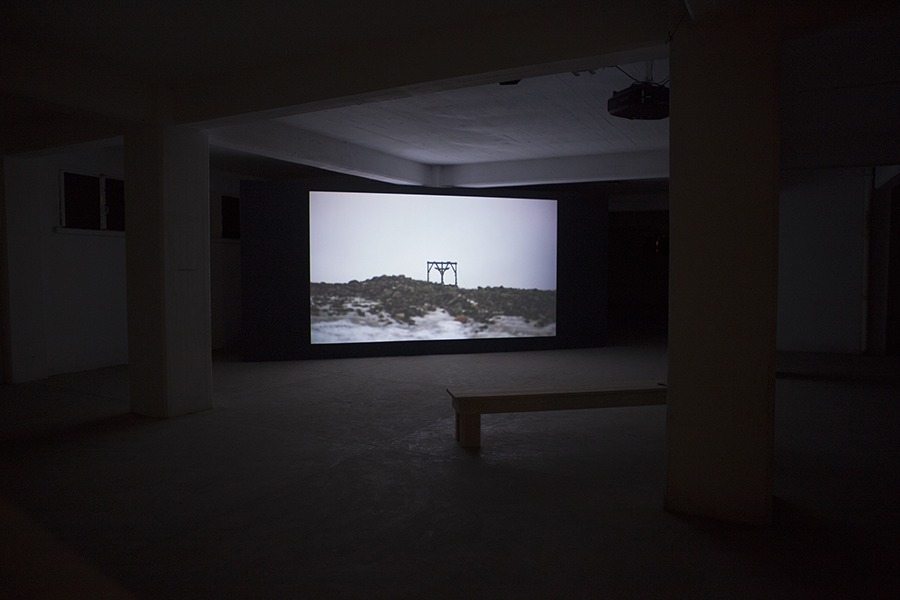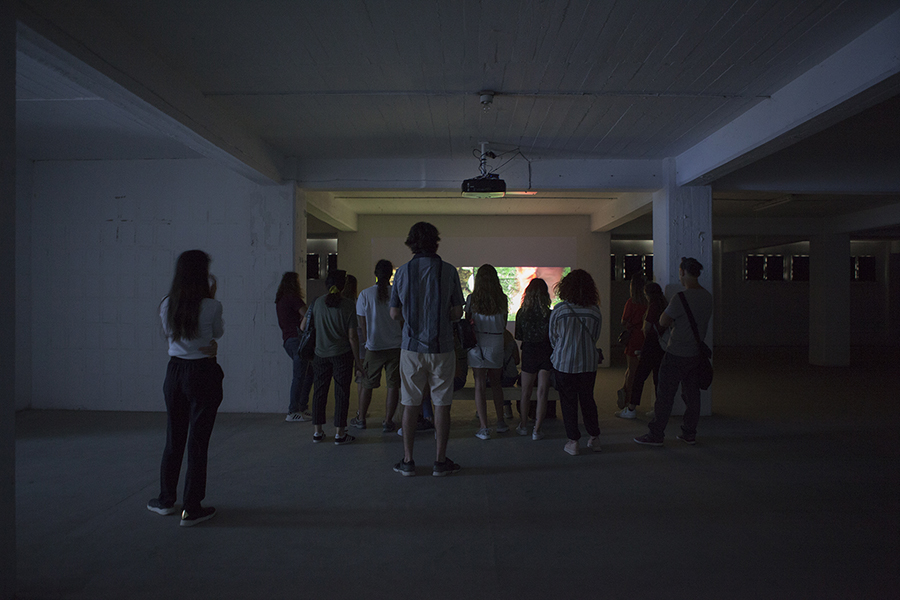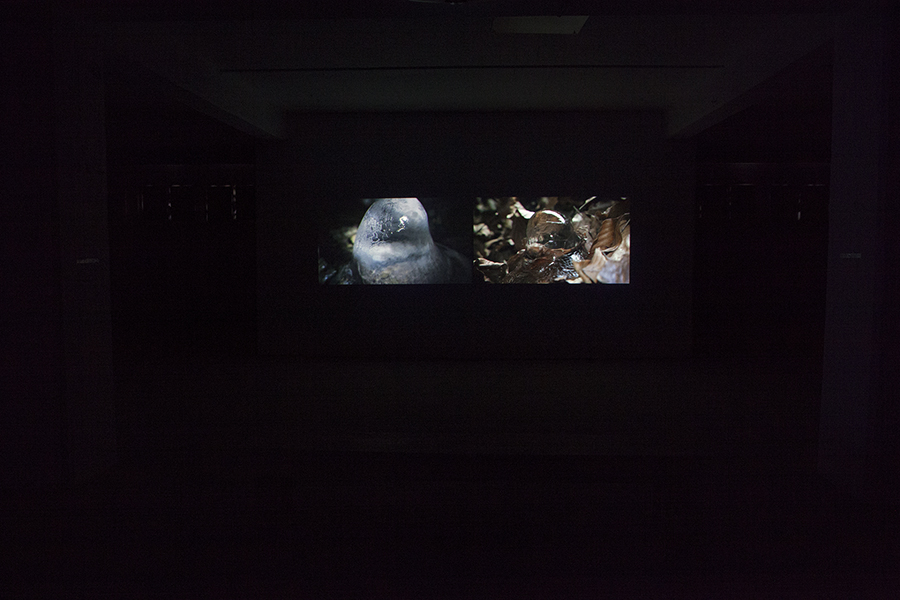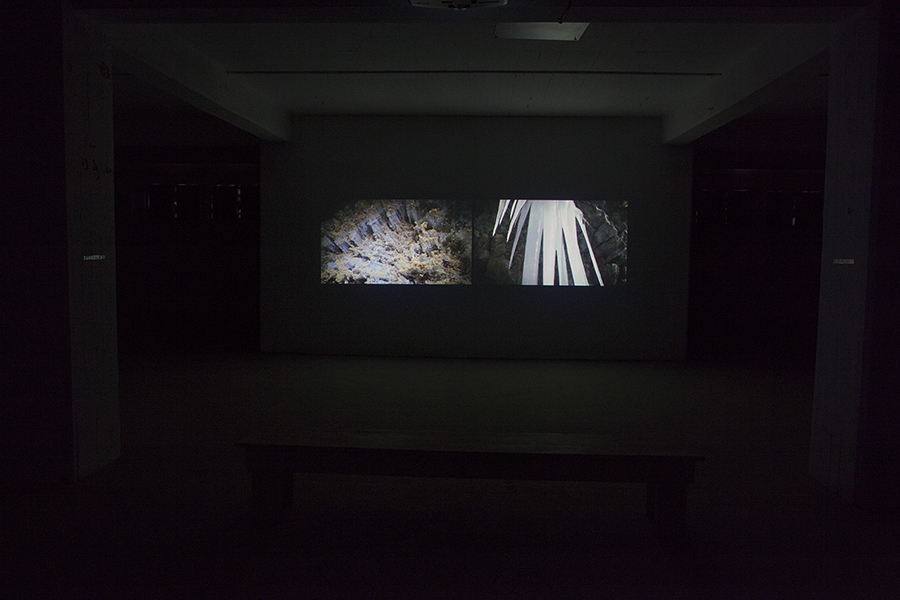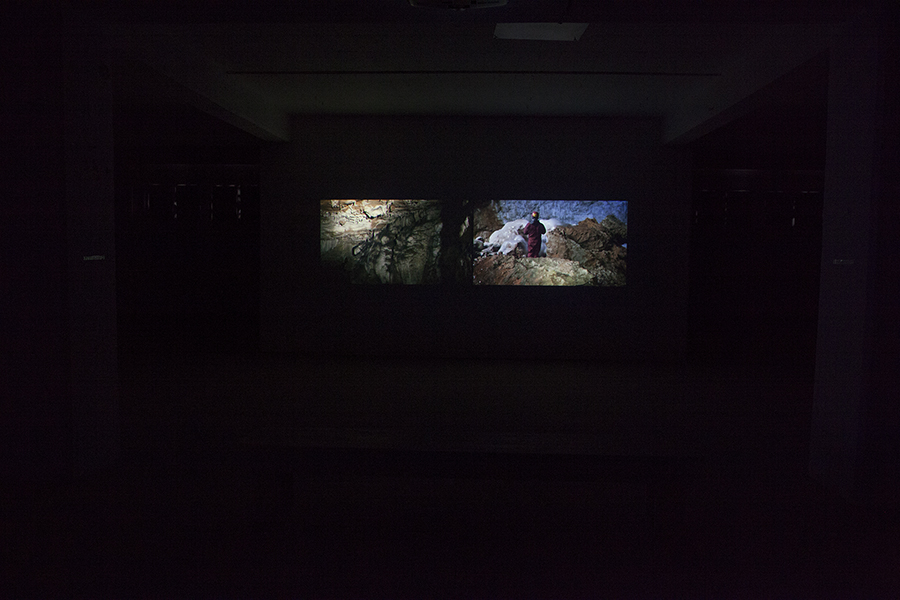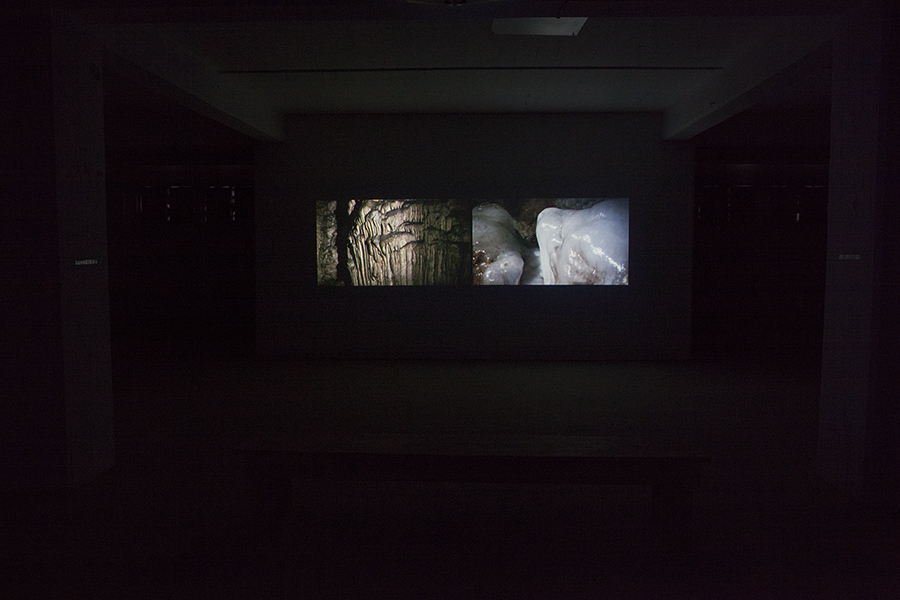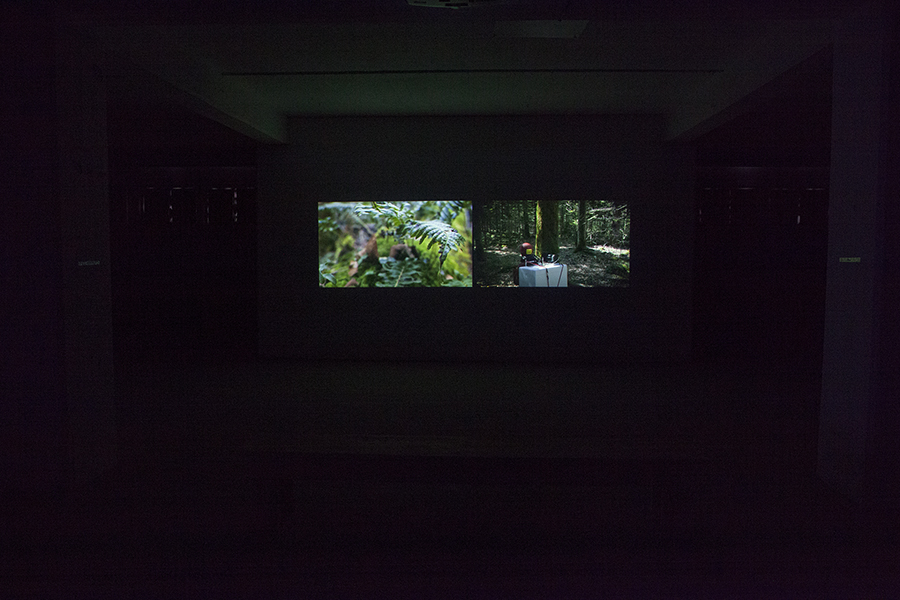Bağışla Beni Daha Yüksek Sesle Konuşamam
15-30/09/2018
Açılış: 15 Eylül, 18:00
Austro-Türk Tütün Deposu
İzmir merkezli kâr amacı gütmeyen güncel sanat platformu Monitor, yeni sezonun açılışını yapacağı ikinci sergisinde, İstanbul merkezli video sanatçısı Ali Kazma ve Slovenyalı sanatçı ikilisi Plateauresidue’yu ağırlıyor. Eski Austro-Turk Tütün Deposu’nda 15 Eylül’de açılacak sergi, 30 Eylül 2018 tarihine dek izlenebilir.
Hayatta kalma içgüdüsünün, Dünya’yı değiştirme ve ardından ona sahip olma arzusuna dönüştüğü insan, kendini ve temas ettiği her şeyi, yavaşlamadığı kadar çabuk kaybetme riskiyle karşı karşıya. Politik, ekonomik, sosyal ayrım gözetmeden dünya nüfusunun hızla azalmasına neden olabilecek gelişmeler yanı başımızda, aracımızın kontağını bir kez daha çevirmemizi bekliyor.
“İnsanların, gelişimin bir bedeli olduğunu bilmeden gezegenin mutlak hükümdarı olduğu insan kökenli çağ başlıyordu. Dünya engin ve tükenmez görünüyordu, ancak, farkında olmasak da doğal denge zaten bozulmuştu”*
Bugün 84 yaşında olan Fransız buzul bilimci Claude Lorius, iklimin nasıl evrimleştiğini tanımlamak için en eski buz ve bu buzun oluştuğu iklim sıcaklığını bulmaya karar verdiğinde 20’li yaşlarının sonundaydı. Lorius, macerayla başlayan yolculuğunda, insanın iklim değişikliğindeki rolünü ispatlayıp öngörülerinin Dünya’nın farklı bölgelerinde gerçekleşen yangınlar, şiddetli fırtına, seller, heyelan ve sıcak hava dalgalarıyla doğru çıkmasına tanık olmaya devam ediyor.
Çalışmalarının temelini, insanlığın tamahkâr ve ihmalkâr davranışları sonucu dengesi bozulan doğaya yönelik pasifliğe karşı mücadelenin oluşturduğu sanatçı ikilisi Plateauresidue’nun, Alma Mater isimli video çalışması, Slovenya’da varlığını sürdüren birkaç buz mağarasından birinde geçiyor. Çalışmanın odak noktasını, küresel ısınma sonucu hızla erimekte olan buz katmanı oluşturuyor. Ağaç dallarının arasından sızıp gelen Güneş’in aydınlattığı bu yerin önceden nasıl olabileceğini, hala ormanların varlığını gözleriyle görebilmiş nesil olarak zihnimizde tamamlayabiliyoruz. Yıkılmış ve göz ardı edilmiş doğaya, henüz unutulmadığını hatırlatmak için orada bulunan bir karakterle karşılaşıyoruz. Bu karakter, fantastik kahramanların favori rengi olan kırmızı tulumunu giyip ağır ağır buz mağarasına doğru yol alıyor. Sırtında taşıdığı, köpükten, el yapımı bir soğutucuyla, mağaradan kalabilecek son parçayı muhafaza edebilme naifliğiyle, yıkımın ve tekrar doğumun bir arada yaşadığı ormanda ilerleyerek. Toprak zeminde yer yer görünen buz parçaları, geçmişteki ormanların şu an yerleşim yeri olup, kalan birkaç ağacı görünce orada ağaç olmasına şaşırdığımız anları hatırlatıyor. Mağaranın girişinde, kayaların üzerinde ince bir tabaka halinde görünen buz katmanı, ilerledikçe üzerimizde ihtişamlı olduğu kadar buruk bir his bırakıyor. Sarkıtların ucundan saniyede birkaç defa damlayan sular, dönüşümün hızı hakkında düşünmemize olanak sağlıyor. Hemen orada düşen bir sarkıttan yapılan buzdan mercek, ardından baktığımız oluyor ve yok olanın penceresinden yok oluşu izliyoruz. Merceğin eriyiş hızının sürüklediği kaygı, bundan sonra hep yanı başımızda kalacakmış hissi veriyor. Soğutucunun kapağının altından, kurtarılan son buz parçası için küçük bir dünya aralanıyor.
Atina’nın Mati kasabasında çıkan yangında Angelopoulos’un yok olan arşivi gibi, yeryüzünün hikayesinin gizli olduğu buzulların erimesiyle geçmiş silinirken, gelecek için umutlu olmak imkansız hale geliyor. Döngüsel varoluşa darbe vuran hatalarımızın bedelini ödediğimiz bu sonbahar ardından gelecek kış, bize neyi getirecek?
Ali Kazma’nın 2013 yılında, ilk kez Venedik Bienali 55. Uluslararası Sanat Sergisi’nin Türkiye Pavyonu’nda gösterilen video serisi Rezistans’a 2015’te eklediği çalışması Kasa’da, olası bir nükleer saldırı, deprem ve küresel ısınma sonucu suların yükselmesi durumunda, bitki genetik çeşitliliğini bir sonraki nesle aktarmak üzere tüm felaketlere dirençli şekilde tasarlanan bir depoyu izliyoruz. Adaların varoluşundaki yalnızlık, onları korunaklı bir yer haline getirebilir mi? Büyük kara parçası hastalıklı hale geldiğinde, uzak tutulması değil, bu kez korunması gerekenler, bir adada tecritte tutulabilir mi? İnsan eliyle yapılabilecek kıyımdan, insanın hayatta kalabilmesi için gerekli olanı korumak için artık yeterince emareye sahip miyiz?
Bu seferki korunak, Alma Mater’dakinden oldukça büyük. Norveç ve Kuzey Kutbu arasındaki Svalbard Adası’nda buzullar henüz tamamen kaybolmamış, Güneş hala tepede ve kar yağıyor. Başta duyduğumuz kuş veya başka bir kutup canlısının sesine rüzgârın uğultusu eşlik ediyor. Keskin sakinliğin ardından mekânın içindeyiz, en son ne zaman orada olduklarını bilemesek de insan aktivitesine ait izler mekânda duruyor. Sessizlik mekanik sesle bozulurken, uzun ve soğuk koridorların ardından deponun bulunduğu yere ulaşıyoruz. Bu, yaşam belirtisinin neredeyse olmadığı görüntü, içinde tüm dünyayı renklendirebilecek milyonlarca tohum barındırıyor. Birbirinin aynı kutularda sınıflandırılmış dünyanın farklı bölgelerinden gelen tohumlar, belki birgün tekrar toprağa dönmek üzere nadasın sona ermesini bekliyor. Kaybetmek üzere olma, koruma içgüdüsünü uyaran faktörler arasında en önemli güç olabilir mi?
Goethe-Institut, Hollanda Büyükelçiliği, İstanbul İsveç Başkonsolosluğu ve Fransız Kültür Merkezi’nin öncülüğünde başlatılıp, İstanbul Kültür Sanat Vakfı (İKSV) ve Anadolu Kültür’ün işbirliğiyle gerçekleştirilen “Kültür için Alan” tarafından desteklenen Monitor’ün, “Bağışla beni, daha yüksek sesle konuşamam” isimli sergisi, 30 Eylül 2018 Pazar gününe dek Eski Austro-Turk Tütün Deposu’nda ziyaret edilebilir.
*Jacquet Luc (Yön.), Buz ve Gökyüzü (La Glace et le Ciel), ESKWAD, Wild-Touch, Pathé, Kering, CNRS Images, Fransa, 2015
//
Forgive me, I can speak no louder
15-30/09/2018
Opening: September 15, 6:00 PM
Austro-Turk Tobacco Depot
Izmir-based non-profit contemporary art platform Monitor, will be hosting Istanbul-based video artist Ali Kazma and Slovenian art-duo Plateauresidue in its second exhibition, that will also mark the season opening. The exhibition can be seen at the Old Austro-Turk Tobacco Depot between 15-30 September.
While humanity’s survival instincts manifest themselves in a desire to change the world or even own it altogether, it faces the risk of losing itself and everything it interacts with on a very short timescale. Whether political, economic, or social in nature, the incidents that do great damage to humanity and reduce its numbers are at our doorstep, waiting for us to make a move.
“An anthropogenic age has begun, in which humans were the monarchs of the planet, blind to the price of evolution. The world seemed boundless and inexhaustible, yet although we were oblivious to it, the balance of nature was already disrupted”*
French glacialist Claude Lorius (84) was in his late 20’s when he had made up his mind to find the oldest ice and the climatic temperature in which this ice came into existence, in order to identify how climate evolved. In this adventurous journey, Lorius continues to prove human’s role in climate change, witnessing various fires, severe storms, floods, landslides and heat waves in different regions of the world proving his estimations to be true.
Alma Mater video work of the art-duo Plateauresidue, whose works are based on the struggle against passivity towards nature unbalanced due to the avaricious and negligent acts of humans, takes place in one of the few ice caves of Slovenia. The focus of the work is the ice stratum that is melting rapidly due to global warming. As members of the generation that witnessed the presence of forests with their own eyes, we are able to picture how this place, now filled with Sun rays penetrating their way through branches once was like. We then meet a character who is there to remind the ruined and ruled out nature that it is not forgotten, yet. This character, puts his red overalls on, the favorite color of super-heroes, and makes for the ice cave slowly. By making his way through the forest, where destruction and re-birth go hand in hand, with a naive sense that he could
preserve the last piece from the cave with the foam, hand-made cooler that he carries on his back. The ice particles seen on the dirt surface from time to time, reminds us of the moments when we see a few trees among residential areas and are shocked to realise that our settlements too were once forests. The thin ice layer on the rocks at the entrance of the cave, leaves us with a majestic, yet wry sense, as we continue our way into the cave. The water dripping from the stalactites several times a second, enables us to think the pace of the alternation. Right at that moment, a stalactite turned ice lens becomes a medium that we look through and we begin to see the extinction, through the window of the extinct. The anxiety caused by the melting pace of the lens feels like is always there to stay. A little world is open half-way for the piece of ice saved under the tap of the freezer.
It becomes impossible to be hopeful for future while the past is wiped away with the glacier, hiding the story of the earth, is melting away just like Angelopoulos’ archive that burnt down in the fire that broke out in Mati, Athens. What are we to expect from this winter that will come after an autumn during which we paid the price of our mistakes that destroyed the cyclic existence?
Ali Kazma’s work Safe, added by the artist to the video serial Resistance that was first shown at Turkey Pavilion of 55th Venice Biennale International Art Exhibition in 2013, shows us a depot designed resistant to multiple kinds of natural disaster in order to pass vegetal diversity to next generation against the possibility of rising water as a result of a possible nuclear attack, earthquake and global warming. Can the lonely existence of islands turn them into a safeguarded place? When the mainland becomes open to disease, could the ones who should be protected, instead of being kept off be kept in isolation on an island? Do we have enough indications to protect the necessities for humans to survive from any artifactual slaughter?
This time the shelter is much bigger than the one in Alma Mater. The glaciers in Svalbard Island, between Norway and North-Pole have not disappeared yet, the Sun is still up and it is snowing. The sound of the bird or some other pole creature we hear at the beginning is accompanied by the howl of the wind. After a sharp tranquility, we are inside the space and though we do not know when they were last present there, signs of human activity are in the same space. While the silence is interrupted by the mechanic sound, we reach the depot after long and cold corridors. This image, without a spark of life holds millions of seeds that could color the whole world. The seeds that come from different regions of the world, classified in exactly the same boxes, are waiting for the end of the fallowing, hopefully to return to the soil some day. Could the probability of loss be the greatest factor that stimulates the instinct to survive?
Monitor’s “Forgive me I can speak no louder” exhibition, supported by “Spaces of Culture”, an initiation by Goethe-Institut, the Embassy of the Netherlands, the Consulate General of Sweden in Istanbul, and the Institut Francais de Turquie in cooperation with Anadolu Kültür and Istanbul Foundation for Culture and Arts (IKSV) can be visited until 30th September, 2018 Sunday at the Old Austro-Turk Tobacco Depot.
* Jacquet Luc (Dir.), Ice and the Sky (La Glace et le Ciel), ESKWAD, Wild-Touch, Pathé, Kering, CNRS Images, France, 2015.
